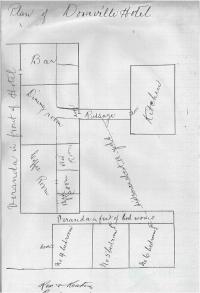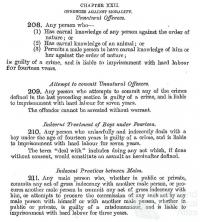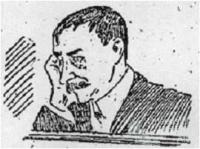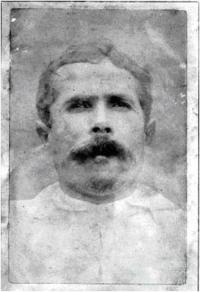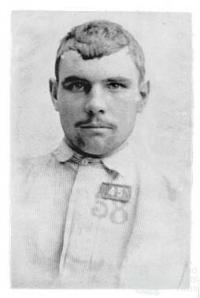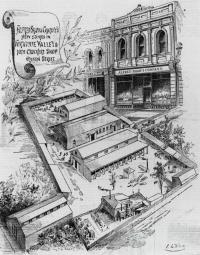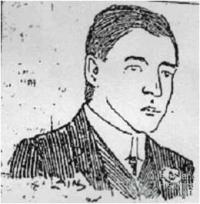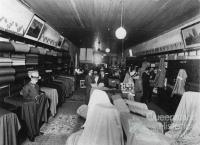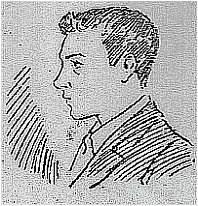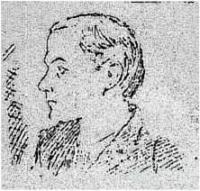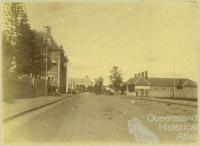- Home
- Quintessential Queensland
- Distinctiveness
- Perceptions
- Perceptions: how people understand the landscape
- From runs to closer settlement
- Geological survey of Queensland
- Mapping a new colony, 1860-80
- Mapping the Torres Strait: from TI to Magani Malu and Zenadh Kes
- Order in Paradise: a colonial gold field
- Queensland atlas, 1865
- Queensland mapping since 1900
- Queensland: the slogan state
- Rainforests of North Queensland
- Walkabout
- Queenslanders
- Queenslanders: people in the landscape
- Aboriginal heroes: episodes in the colonial landscape
- Australian South Sea Islanders
- Cane fields and solidarity in the multiethnic north
- Chinatowns
- Colonial immigration to Queensland
- Greek Cafés in the landscape of Queensland
- Hispanics and human rights in Queensland’s public spaces
- Italians in north Queensland
- Lebanese in rural Queensland
- Queensland clothing
- Queensland for ‘the best kind of population, primary producers’
- Too remote, too primitive and too expensive: Scandinavian settlers in colonial Queensland
- Distance
- Movement
- Movement: how people move through the landscape
- Air travel in Queensland
- Bicycling through Brisbane, 1896
- Cobb & Co
- Journey to Hayman Island, 1938
- Law and story-strings
- Mobile kids: children’s explorations of Cherbourg
- Movable heritage of North Queensland
- Passages to India: military linkages with Queensland
- The Queen in Queensland, 1954
- Transient Chinese in colonial Queensland
- Travelling times by rail
- Pathways
- Pathways: how things move through the landscape and where they are made
- Aboriginal dreaming paths and trading ways
- Chinese traders in the nineteenth century
- Introducing the cane toad
- Pituri bag
- Press and the media
- Radio in Queensland
- Red Cross Society and World War I in Queensland
- The telephone in Queensland
- Where did the trams go?
- ‘A little bit of love for me and a murder for my old man’: the Queensland Bush Book Club
- Movement
- Division
- Separation
- Separation: divisions in the landscape
- Asylums in the landscape
- Brisbane River
- Changing landscape of radicalism
- Civil government boundaries
- Convict Brisbane
- Dividing Queensland - Pauline Hanson’s One Nation Party
- High water mark: the shifting electoral landscape 2001-12
- Hospitals in the landscape
- Indigenous health
- Palm Island
- Secession movements
- Separate spheres: gender and dress codes
- Separating land, separating culture
- Stone walls do a prison make: law on the landscape
- The 1967 Referendum – the State comes together?
- Utopian communities
- Whiteness in the tropics
- Conflict
- Conflict: how people contest the landscape
- A tale of two elections – One Nation and political protest
- Battle of Brisbane – Australian masculinity under threat
- Dangerous spaces - youth politics in Brisbane, 1960s-70s
- Fortress Queensland 1942-45
- Grassy hills: colonial defence and coastal forts
- Great Shearers’ Strike of 1891
- Iwasaki project
- Johannes Bjelke-Petersen: straddling a barbed wire fence
- Mount Etna: Queensland's longest environmental conflict
- Native Police
- Skyrail Cairns (Research notes)
- Staunch but conservative – the trade union movement in Rockhampton
- The Chinese question
- Thomas Wentworth Wills and Cullin-la-ringo Station
- Separation
- Dreaming
- Imagination
- Imagination: how people have imagined Queensland
- Brisbane River and Moreton Bay: Thomas Welsby
- Changing views of the Glasshouse Mountains
- Imagining Queensland in film and television production
- Jacaranda
- Literary mapping of Brisbane in the 1990s
- Looking at Mount Coot-tha
- Mapping the Macqueen farm
- Mapping the mythic: Hugh Sawrey's ‘outback’
- People’s Republic of Woodford
- Poinsettia city: Brisbane’s flower
- The Pineapple Girl
- The writers of Tamborine Mountain
- Vance and Nettie Palmer
- Memory
- Memory: how people remember the landscape
- Anna Wickham: the memory of a moment
- Berajondo and Mill Point: remembering place and landscape
- Cemeteries in the landscape
- Landscapes of memory: Tjapukai Dance Theatre and Laura Festival
- Monuments and memory: T.J. Byrnes and T.J. Ryan
- Out where the dead towns lie
- Queensland in miniature: the Brisbane Exhibition
- Roadside ++++ memorials
- Shipwrecks as graves
- The Dame in the tropics: Nellie Melba
- Tinnenburra
- Vanished heritage
- War memorials
- Curiosity
- Curiosity: knowledge through the landscape
- A playground for science: Great Barrier Reef
- Duboisia hopwoodii: a colonial curiosity
- Great Artesian Basin: water from deeper down
- In search of Landsborough
- James Cook’s hundred days in Queensland
- Mutual curiosity – Aboriginal people and explorers
- Queensland Acclimatisation Society
- Queensland’s own sea monster: a curious tale of loss and regret
- St Lucia: degrees of landscape
- Townsville’s Mount St John Zoo
- Imagination
- Development
- Exploitation
- Transformation
- Transformation: how the landscape has changed and been modified
- Cultivation
- Empire and agribusiness: the Australian Mercantile Land and Finance Company
- Gold
- Kill, cure, or strangle: Atherton Tablelands
- National parks in Queensland
- Pastoralism 1860s–1915
- Prickly pear
- Repurchasing estates: the transformation of Durundur
- Soil
- Sugar
- Sunshine Coast
- The Brigalow
- Walter Reid Cultural Centre, Rockhampton: back again
- Survival
- Survival: how the landscape impacts on people
- Brisbane floods: 1893 to the summer of sorrow
- City of the Damned: how the media embraced the Brisbane floods
- Depression era
- Did Clem Jones save Brisbane from flood?
- Droughts and floods and rail
- Missions and reserves
- Queensland British Food Corporation
- Rockhampton’s great flood of 1918
- Station homesteads
- Tropical cyclones
- Wreck of the Quetta
- Pleasure
- Pleasure: how people enjoy the landscape
- Bushwalking in Queensland
- Cherbourg that’s my home: celebrating landscape through song
- Creating rural attractions
- Festivals
- Queer pleasure: masculinity, male homosexuality and public space
- Railway refreshment rooms
- Regional cinema
- Schoolies week: a festival of misrule
- The sporting landscape
- Visiting the Great Barrier Reef
By:
Yorick Smaal Public space has been a defining feature of modern homosexual subcultures. Like most western cultures, Queensland outlawed sex between men during the nineteenth and most of the twentieth century; the local scientific community considered homosexuals as perverse and mentally-ill. But despite this opprobrium, certain men enacted public codes and behaviours as part of their identity, using them to attract like-minded others. At the turn of the nineteenth century, these markers began to coalesce; creating the beginnings of urban male subculture and informing a common sense of self. Patterns in Brisbane were paralleled, in part, by developments in rural areas and small towns with travel between the city and country diffusing shared ideas and experiences. Only the rich could afford their own privacy, and this helps explain why most of the remaining court evidence appears to be the domain of the working classes. The records reveal that 116 definitive charges of male-only sex appear in the courts between 1890 and 1914.
Mateship and the rural world
Late-nineteenth century Queensland was largely a masculine preserve predicated on mining, agricultural, and pastoral pursuits. Men still outnumbered women 132.2 to 100 in 1890 and by 125.3 to 100 in 1900. This imbalance persisted into the early decades of the twentieth century: even by 1914 there were 118.5 men for every 100 women, figures that were magnified outside the larger metropolitan centres of Brisbane and Toowoomba. It was here beyond the confines of urban life that mateship emerged as the dominant narrative of masculinity. The standard Australian male, based upon the egalitarian bushmen and pastoral workers of the nineteenth century, was forged in the harsh social and climatic conditions of the Australian bush. By definition, these men had little social infrastructure, limited or no family networks, and a dearth of female companionship.
But despite these large numbers of single, young men, few historical accounts have acknowledged same-sex possibilities of mateship. Features of rural working life, such as the perennial circuit of migratory male workers, meant that men and youths were often left with little choice but to sleep in makeshift huts and share accommodation with other men. Sleeping rough under the stars was also common. Young men in their sexual prime often had little choice but to share each others’ company and the court evidence reveals clearly that the line between friendship and intimacy could blur. In isolated male-dominated communities pubs and hotels were the focus of entertainment and a place for company for these workers. Alcohol loosened tongues as well as inhibitions and the use (and abuse) of alcohol was a constant feature of male-only encounters in frontier Queensland.
Race
Homosexuality was not restricted to Caucasian population. Chinese, other Asian, and Pacific Islander men, were also involved in same-sex relations. Some Islanders came from societies where homosexual initiations were fundamental to becoming a man, or where homosexual acts were tolerated in male society. In 1900, for example, at Airdmillan Estate near Ayr in north Queensland, a 25-year-old South Sea Island labourer slept with another island recruit, explaining to the police: ‘… me sleep long a him ... me dream and think him woman’. Five cases involved Chinese men between 1890 and 1914 and one case a Japanese defendant.
An emerging subculture: employment, boarding houses and hotels
A small, but visible, urban subculture based on public space emerged in Brisbane around this time. Boarding houses and places of employment were an important part of this network: men propositioned others in workplaces, especially when employees bunked down together, and a number of lodgings, including the Newstead and ‘Woodlands’ boarding houses in inner Brisbane, provided sexual opportunities under the right circumstances. Cinemas and risqué coffee houses were another feature of the subculture, and in 1907, the Truth described a man of the ‘coffee-room class’ alleged to proposition young men in certain establishments. In regional centres too boarding houses could bring together like-minded men, and hotels in small towns offered potential contact. Even men living on isolated pastoral stations played a small but integral part in forming a wider identity based on more than just sexual release. In 1907, one shearer looking for male contact spent the night at the Dornville Hotel in Millmerran, near Pittsworth, rather than staying at his mother’s farm nearby.
Urban subcultures, Beats and behavioural codes
Patterns of urbanisation and industrialisation ensured that Brisbane remained the primary centre of any rudimentary homosexual identity in this period, and the use of public space, especially around transport hubs, was an important feature of this terrene. By enacting practices on naturally formed or constructed terrain, certain men imposed meanings on a given locations. By the end of the nineteenth century some men began to rely upon the visibility of difference to meet like-minded others. They marked their sexuality through dress, demeanour, or affection meeting suitors on public trams and city streets. A well-known Brisbane case in the early 1900s described one ‘city queen’ with an elaborate dress code. Those ‘in the know’ could spot a potential suitor and sometimes a simple gaze was enough. Beats – a uniquely Australian phrase that designates any (public) space that men might convene to socialise and have sex – sprang up in urban areas, although they can be traced as far back as the 1860s. They blended together working-class and middle-class men, married and unmarried men, those who considered themselves as homosexual, and those who did not. By 1900, Brisbane’s Botanic Gardens and Wickham and Albert Parks were known meeting spots. The area around William Street and Victoria Bridge was also popular. The introduction of ‘gross indecency’ to Queensland’s Criminal Code, in force from 1901, signalled a growing awareness of this community. The offence covered acts of mutual masturbation and oral sex in public or private, giving the police a new tool to control and contain unwanted homosexual behaviour as they ramped up efforts to keep certain locations under surveillance. There is also some evidence that newspaper articles on male sex in public may have served as a guide to Brisbane’s sexual underground even though their primary purpose was to proscribe such activity.
Outside the public eye others were more outrageous. Patterns of effeminacy and gender-inversion were accepted forms of self-expression in some circles and were certainly an embedded part of homosexual identity by the 1920s. One group of ‘Cissies’ turned up to a bachelor party with ‘carmined lips, powdered faces, painted eyes and long marcella waved hair’. They feminised their personal space marking their abodes in ‘soft and seductive colors [sic] of pink and mauve’ embellished with ‘shaded lights and exotic flowers’. They also called each other ‘girlish names’. Indeed, female names and pronouns could be employed as code in public and were used as far back as the convict period in Australia. Along with other slang, they became significant markers of social cohesion. The word ‘puff’ for example – an effeminate term used in London from the 1830s onwards – appeared in a Brisbane court case in 1905. ‘Dropsey is a puff’ one the youths explained. ‘There are plenty of others in Brisbane who do it besides us mob, so I am not the first’.
References and Further reading (Note):
Clive Moore, Sunshine and rainbows: the development of gay and lesbian culture in Queensland, St Lucia, University of Queensland, 2001
References and Further reading (Note):
Yorick Smaal, ‘Coding desire: the emergence of a homosexual subculture in Queensland, 1890-1914’, in Yorick Smaal and Belinda McKay (eds), Queer Queensland, Special Edition, Queensland review, 14/2, 2007
References and Further reading (Note):
Yorick Smaal and Clive Moore, ‘Homophobia in Fin de Siècle Queensland’, in Shirleene Robinson (ed), Homophobia: an Australian history, Sydney, Federation, 2008
References and Further reading (Note):
Yorick Smaal, ‘More than mates?: Masculinity, homosexuality, and the formation of an embryonic subculture in Queensland, 1890-1914’, MPhil Thesis, University of Queensland, 2004
References and Further reading (Note):
Clive Moore, ‘The frontier makes strange bedfellows: masculinity, mateship and homosexuality in colonial Queensland’, in Garry Wotherspoon (ed), Gay and lesbian perspectives III: essays in Australian culture, Sydney, University of Sydney, 1996
References and Further reading (Note):
‘Curious creatures: the city’s painted effeminates’, Truth (Brisbane), 6 March 1921

